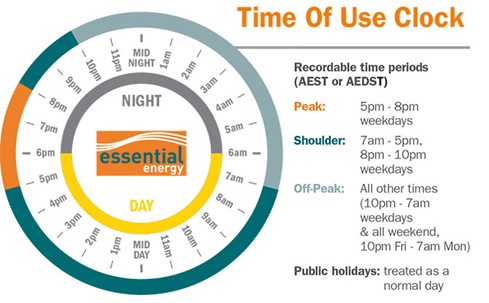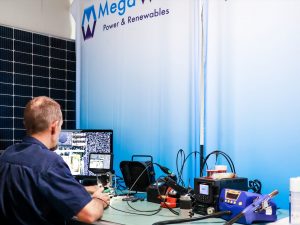

Imagine your battery as a savvy investor, buying low, selling high, every single day.
Most people think of a battery as a simple storage unit, but in the wholesale energy market, it’s a financial engine. And like any good investment, timing and strategy matter just as much as size and price.
In this post, we’ll explain how wholesale energy pricing works, why seasons and daily patterns matter, and how you can make your battery not just save money, but earn it.
The Seasonal Shift in Energy Prices
Wholesale prices aren’t fixed. They’re shaped by the energy market and move with the seasons.
- Spring & Autumn are historically the cheapest season for wholesale energy. Days are sunny, but not too hot or cold, meaning there’s strong renewable generation and lower demand for heating or cooling.
- Winter tends to cost more. Shorter days, weaker solar output, and heaters running across the state push prices up.
- Summer extremes can also spike prices when air conditioners and heatwaves put pressure on the grid.
For all battery owners, this will mean that, depending on the season you are in, your game plan will change. A smart battery strategy in winter might be different from your approach in spring, and if you can adapt, your returns grow.
The Daily Rhythm of Wholesale Pricing
Energy prices also follow a daily rhythm and using a VPP:
- Midday: Prices often drop when solar generation is high and demand is low.
- Evening: Prices rise sharply as households cook, clean, and cool down between 5:30–7pm.

With the right battery programming from your VPP provider, you can charge when prices are low and export when they’re high, without lifting a finger. This is the kind of optimisation that takes your savings (and earnings) to another level.
Why Battery Size Still Matters
Timing is powerful, but battery capacity is your multiplier.
A larger battery means you can store more energy from your solar and sell more when it’s profitable if your system is connected to a Virtual Power Plant (VPP), this allows you to take advantage of trading opportunities without worrying about export caps.
This is where it pays to look beyond a smaller battery. With the Cheaper Home Battery Scheme and the income potential from VPP trading, many households come out ahead by going bigger. This is why it is always best to seek advice from your local solar energy provider when installing a battery.
Virtual Power Plants: The Hidden Multiplier
Think of a VPP as a team of home batteries working together to supply power to the grid when it’s most needed, and most valuable.
With a model like Amber’s, your battery can ‘trade’ electricity on the wholesale market, buying when it’s cheap and selling when prices spike. No missed opportunity. And you still have priority access to the energy you’ve stored for your own use.
This is where the combination of capacity, timing, and market participation can turn a good battery investment into a great one.
Practical Steps to Get Started
- Data – Ask you installer if they have any data from existing customers who are currently with a VPP provider.
- Program for profit – Set your battery to only charge during low-price periods and export during peaks.
- Consider capacity -If you want to maximise VPP trading, larger storage can pay off faster.
- Choose the right VPP -Look for one that gives you flexibility, transparency, and strong earnings potential.
The Bottom Line
Your solar battery serves a purpose beyond merely providing power during grid outages; it is an active, revenue-generating component of your home energy system. By strategically combining timing, capacity, and intelligent market engagement, you can accelerate its return on investment and ensure it continues to deliver benefits long after the rebates have been forgotten.
Your battery can be more than storage; it can be a money-maker.
Talk to Mega Watt Power today for tailored advice on battery sizing, rebate opportunities, and the best way to maximise your returns in the wholesale market.



